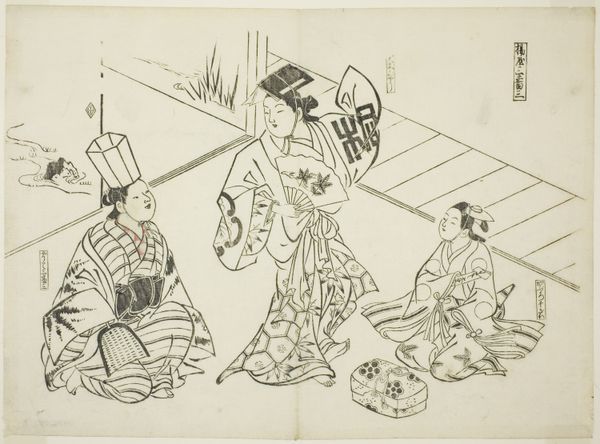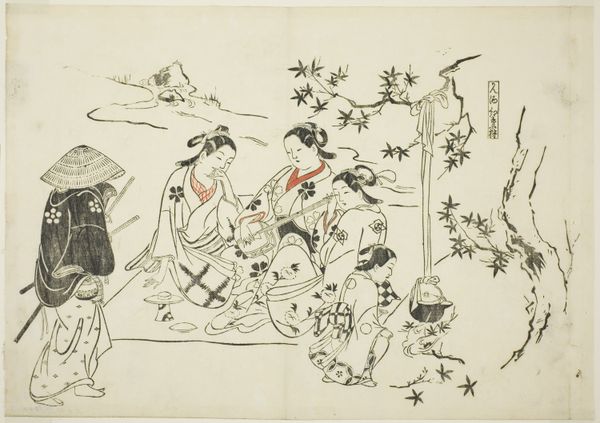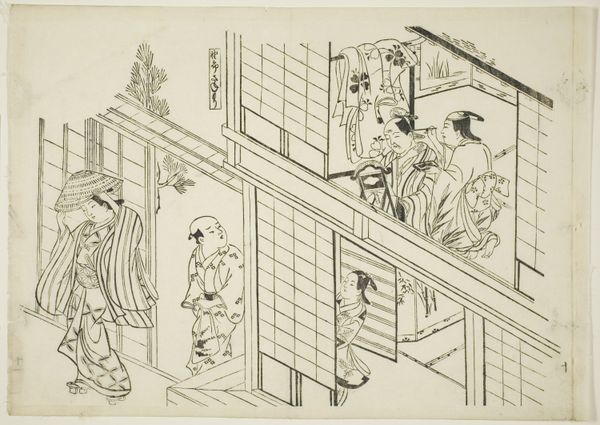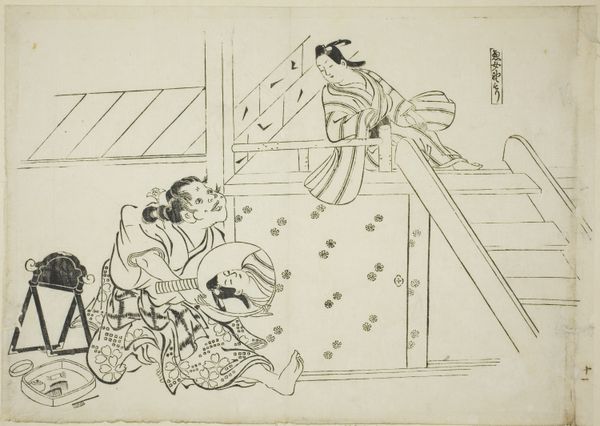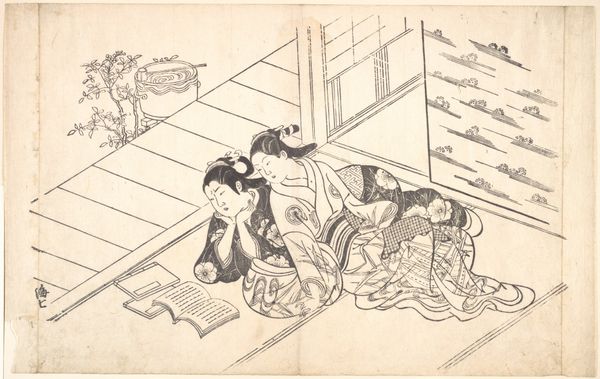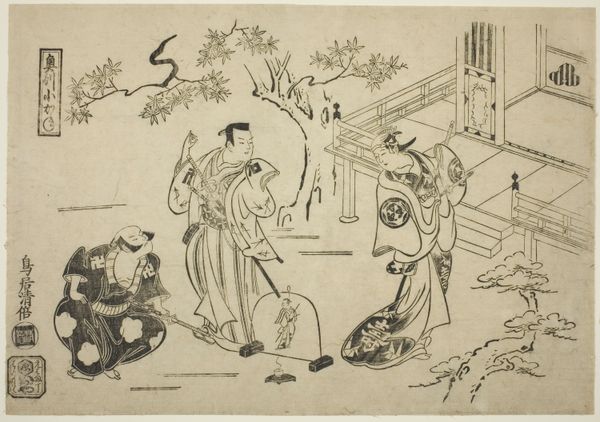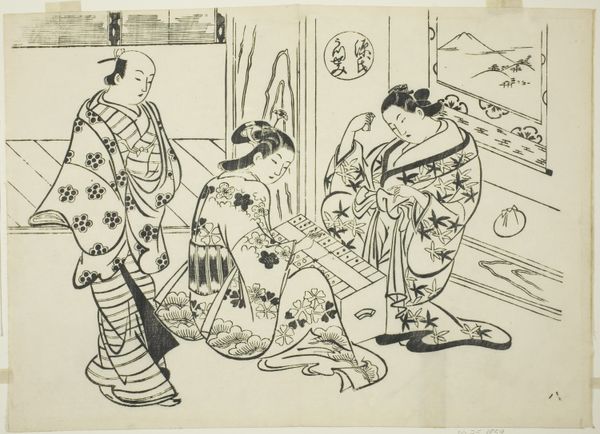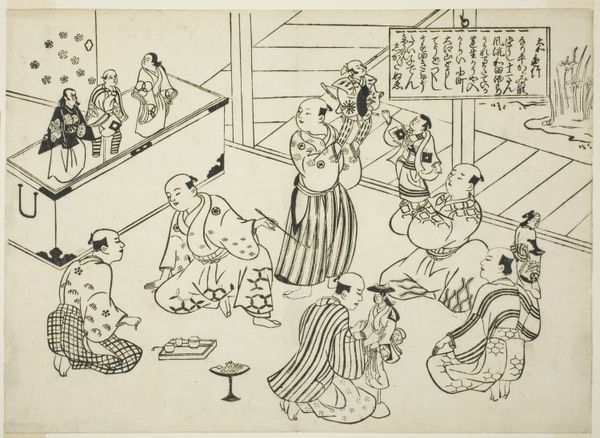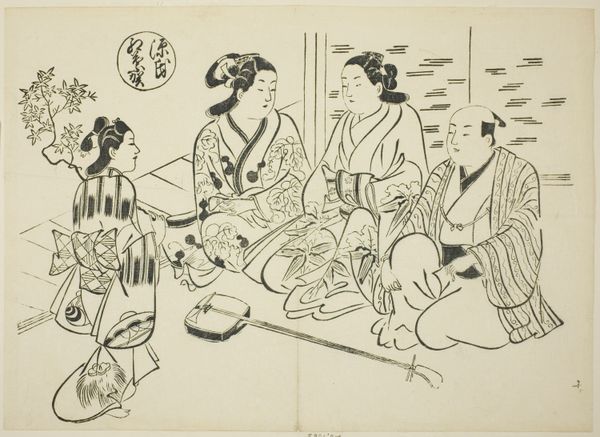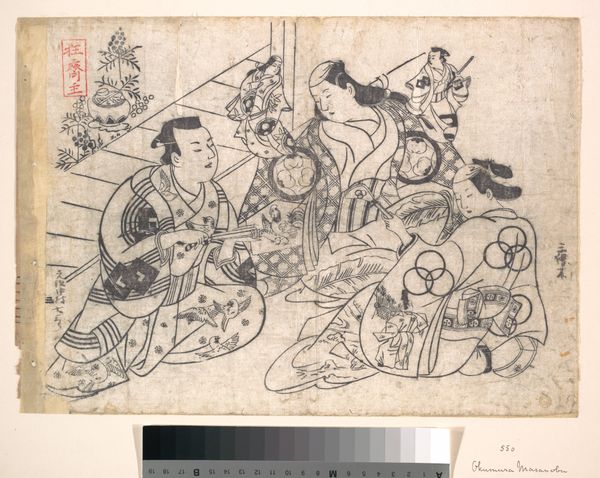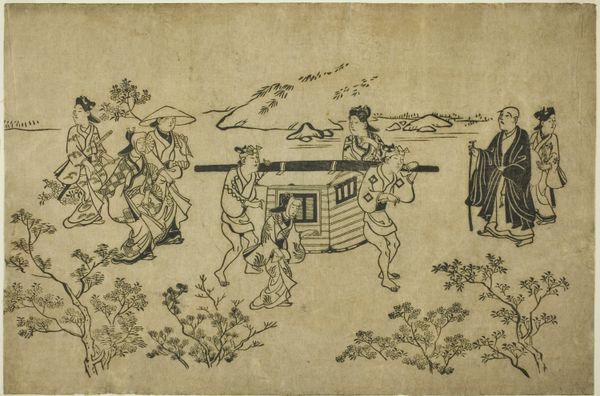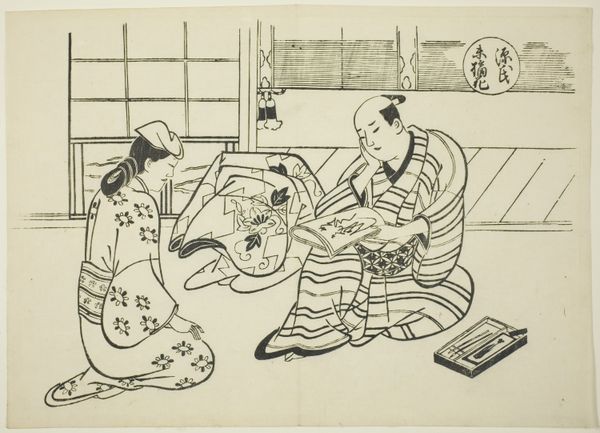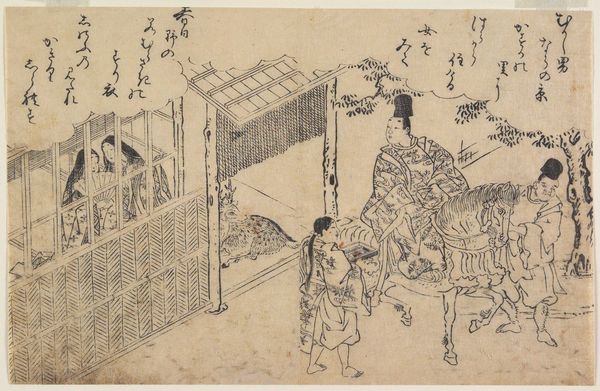
The Bamboo Flute and the Potted Tree (Shakuhachi hachi-no-ki), no. 12 from a series of 12 prints depicting parodies of plays c. 1716s - 1726s
0:00
0:00
print, paper, ink, woodblock-print
# print
#
asian-art
#
ukiyo-e
#
paper
#
ink
#
woodblock-print
#
genre-painting
Dimensions: 38.1 × 27.0 cm
Copyright: Public Domain
Curator: Looking at this piece, I'm struck by how peaceful it seems despite all that's going on in the image, a sort of meditative concentration amidst the everyday. Editor: Yes, the linear precision really creates an ambiance of tranquility, doesn't it? What you are looking at is a work by Okumura Masanobu titled "The Bamboo Flute and the Potted Tree." This woodblock print, using ink and paper, comes from a series called "Parodies of Plays," dating from about 1716 to 1726. Curator: Ah, parodies! Now that's interesting. Suddenly the sword she's holding makes more sense! The gentleness I initially perceived takes on this slightly playful edge... it feels like a subtle rebellion against the very strictures they're mimicking. Almost like winking at the viewer! Editor: Precisely! Masanobu was playing with cultural expectations. Ukiyo-e prints, in particular, often negotiated social commentary through the lens of entertainment, poking fun at popular narratives while navigating censorship. Notice how he uses interior space – screens, wall hangings – as sites for visual quotation. Curator: That’s true – almost like little stages within the stage of the print itself. This interior/exterior relationship and play with depth creates the sense of almost, floating planes—the boundary lines in this piece give the whole artwork a quality that balances this play between presence and absence, almost as though all these people and things are dreamscapes from somewhere deep within my imagination. Editor: And that layering of images—the parody within a parody—speaks to the complex world of Japanese theater and its reflection in popular culture. Masanobu understood how art can mediate these roles, almost democratizing elite culture through reproduction and circulation. Curator: Makes you wonder about who bought these prints, what conversations they sparked! It feels much more vibrant, less… precious, than some more traditional artworks of the time. I get the sense that this image, rendered via ink on paper, invites everyone to play with cultural meaning in new and imaginative ways. Editor: Ultimately, Masanobu encourages a broader dialogue, suggesting that even within the framework of prescribed social narratives, creative reimagining always remains a potent tool. It invites us to question, appreciate art history with playfulness and a sense of historical context, while celebrating creativity as cultural practice.
Comments
No comments
Be the first to comment and join the conversation on the ultimate creative platform.
